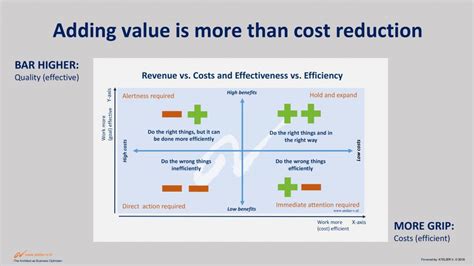Intro
Discover the Bupropion XL medication guide, covering dosage, side effects, and interactions. Learn about this antidepressants benefits and uses, including smoking cessation and depression treatment, with expert advice and precautions.
Bupropion XL is a medication that has been widely used to treat depression, seasonal affective disorder, and as an aid for smoking cessation. Understanding the proper use, benefits, and potential side effects of Bupropion XL is crucial for individuals considering this medication. The importance of adhering to the prescribed dosage and being aware of the drug's interactions cannot be overstated. Moreover, the role of Bupropion XL in managing depression and its symptoms highlights the need for comprehensive patient education.
The mechanism by which Bupropion XL works is distinct from other antidepressants, as it primarily affects the neurotransmitters dopamine and norepinephrine, rather than serotonin. This unique action contributes to its efficacy in treating depression and can also influence its side effect profile. For individuals suffering from depression, the possibility of finding relief through Bupropion XL can be a significant turning point in their treatment journey. It's essential for patients to work closely with their healthcare provider to monitor their response to the medication and adjust the treatment plan as necessary.
Given the potential benefits and the need for careful management, it's critical to delve into the specifics of Bupropion XL, including its indications, dosage, side effects, and interactions. By understanding these aspects, patients and healthcare providers can make informed decisions about the use of Bupropion XL in treating depression and other conditions. The medication's profile, including its extended-release formulation, is designed to provide steady and consistent therapeutic effects throughout the day, which can enhance patient compliance and treatment outcomes.
Introduction to Bupropion XL

Pharmacological Profile
The pharmacological profile of Bupropion XL is characterized by its influence on dopamine and norepinephrine, two neurotransmitters that play key roles in mood regulation and the body's reward system. By inhibiting the reuptake of these neurotransmitters, Bupropion XL increases their availability in the synaptic cleft, which can help alleviate symptoms of depression. This action is somewhat different from that of selective serotonin reuptake inhibitors (SSRIs), which primarily target serotonin. The distinct mechanism of action of Bupropion XL can make it a valuable option for patients who have not responded adequately to other types of antidepressants.Indications and Usage

Dosage and Administration
The dosage of Bupropion XL varies depending on the condition being treated. For the treatment of MDD, the usual starting dose is 150 mg once daily, which may be increased to 300 mg once daily after a minimum of 4 days. For SAD, the dosage is typically started in the autumn, prior to the onset of symptoms, and may be tapered off in the spring. The maximum recommended dose is 450 mg once daily, and doses should not exceed this amount to minimize the risk of seizures, a known side effect of bupropion.Benefits and Efficacy

Patient Selection and Monitoring
Patient selection for Bupropion XL treatment involves careful consideration of the individual's medical history, particularly any history of seizure disorders, as bupropion can lower the seizure threshold. Monitoring for signs of seizure activity, as well as for the emergence of suicidal thoughts or behaviors, is crucial during the initial treatment phases. Regular follow-up appointments with a healthcare provider can help identify any issues early on and allow for adjustments to the treatment plan as needed.Side Effects and Interactions

Contraindications and Warnings
Bupropion XL is contraindicated in patients with a history of seizures, eating disorders, or those undergoing abrupt discontinuation of alcohol or sedatives. It should be used with caution in patients with hepatic or renal impairment, as well as in the elderly. Warnings include the risk of suicidal thoughts and behaviors, particularly in children, adolescents, and young adults, and the potential for increased blood pressure.Treatment Outcomes and Patient Experience

Long-Term Use and Discontinuation
Long-term use of Bupropion XL is generally considered safe, but it requires regular monitoring to assess the ongoing need for the medication and to evaluate for any adverse effects. Discontinuation of Bupropion XL should be done gradually, under the guidance of a healthcare provider, to minimize the risk of withdrawal symptoms. The decision to stop treatment is typically based on the patient's response to the medication and their overall mental health status.Conclusion and Future Directions

Final Considerations
For patients and healthcare providers alike, the key to successful treatment with Bupropion XL lies in careful patient selection, monitoring, and open communication. By working together and staying informed about the latest developments in the field, individuals can navigate the complexities of treatment and find the best path forward in managing their condition.What is Bupropion XL used for?
+Bupropion XL is used for the treatment of major depressive disorder (MDD), seasonal affective disorder (SAD), and as an aid for smoking cessation.
How does Bupropion XL work?
+Bupropion XL works by inhibiting the reuptake of dopamine and norepinephrine, increasing their availability in the synaptic cleft, which helps alleviate symptoms of depression.
What are the common side effects of Bupropion XL?
+Common side effects include dry mouth, nausea, insomnia, and headache. More serious side effects can include seizures and changes in mood or behavior.
We hope this comprehensive guide to Bupropion XL has provided valuable insights into its uses, benefits, and potential side effects. If you have any further questions or would like to share your experiences with Bupropion XL, please don't hesitate to comment below. Your input can help others better understand this medication and its role in treating depression and aiding in smoking cessation. Additionally, if you found this article informative, consider sharing it with others who may benefit from this information. Together, we can work towards better mental health outcomes and support those navigating the complexities of treatment.
